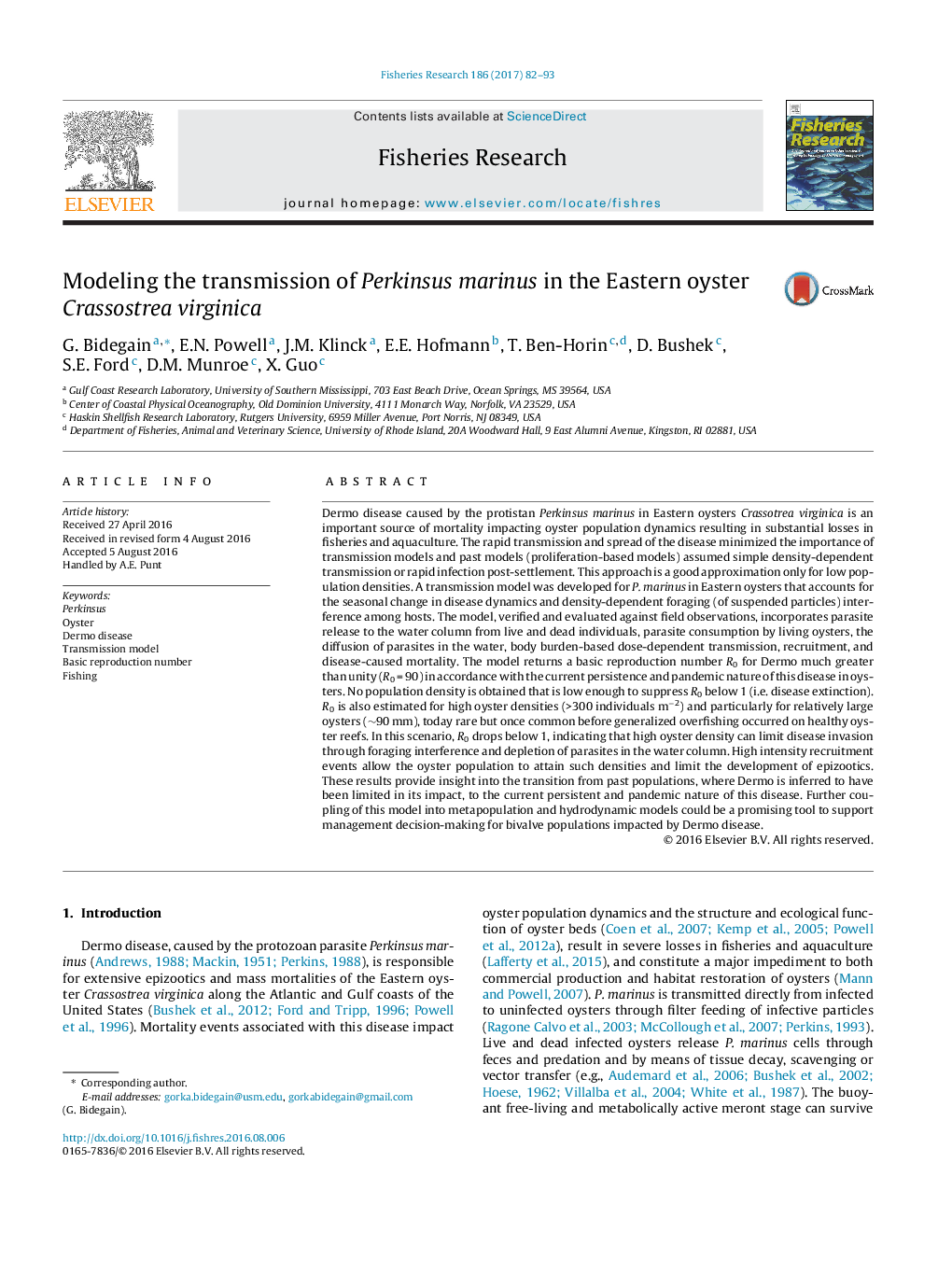| Article ID | Journal | Published Year | Pages | File Type |
|---|---|---|---|---|
| 4542603 | Fisheries Research | 2017 | 12 Pages |
•We develop an infectious disease model for Dermo in the Eastern oyster.•The model includes seasonality, infective dose and fishing.•We first estimate the basic reproduction number (R0 ≫ 1) for Dermo.•We suggest that overfishing has led to the current persistence of Dermo in oysters.
Dermo disease caused by the protistan Perkinsus marinus in Eastern oysters Crassotrea virginica is an important source of mortality impacting oyster population dynamics resulting in substantial losses in fisheries and aquaculture. The rapid transmission and spread of the disease minimized the importance of transmission models and past models (proliferation-based models) assumed simple density-dependent transmission or rapid infection post-settlement. This approach is a good approximation only for low population densities. A transmission model was developed for P. marinus in Eastern oysters that accounts for the seasonal change in disease dynamics and density-dependent foraging (of suspended particles) interference among hosts. The model, verified and evaluated against field observations, incorporates parasite release to the water column from live and dead individuals, parasite consumption by living oysters, the diffusion of parasites in the water, body burden-based dose-dependent transmission, recruitment, and disease-caused mortality. The model returns a basic reproduction number R0 for Dermo much greater than unity (R0 = 90) in accordance with the current persistence and pandemic nature of this disease in oysters. No population density is obtained that is low enough to suppress R0 below 1 (i.e. disease extinction). R0 is also estimated for high oyster densities (>300 individuals m−2) and particularly for relatively large oysters (∼90 mm), today rare but once common before generalized overfishing occurred on healthy oyster reefs. In this scenario, R0 drops below 1, indicating that high oyster density can limit disease invasion through foraging interference and depletion of parasites in the water column. High intensity recruitment events allow the oyster population to attain such densities and limit the development of epizootics. These results provide insight into the transition from past populations, where Dermo is inferred to have been limited in its impact, to the current persistent and pandemic nature of this disease. Further coupling of this model into metapopulation and hydrodynamic models could be a promising tool to support management decision-making for bivalve populations impacted by Dermo disease.
